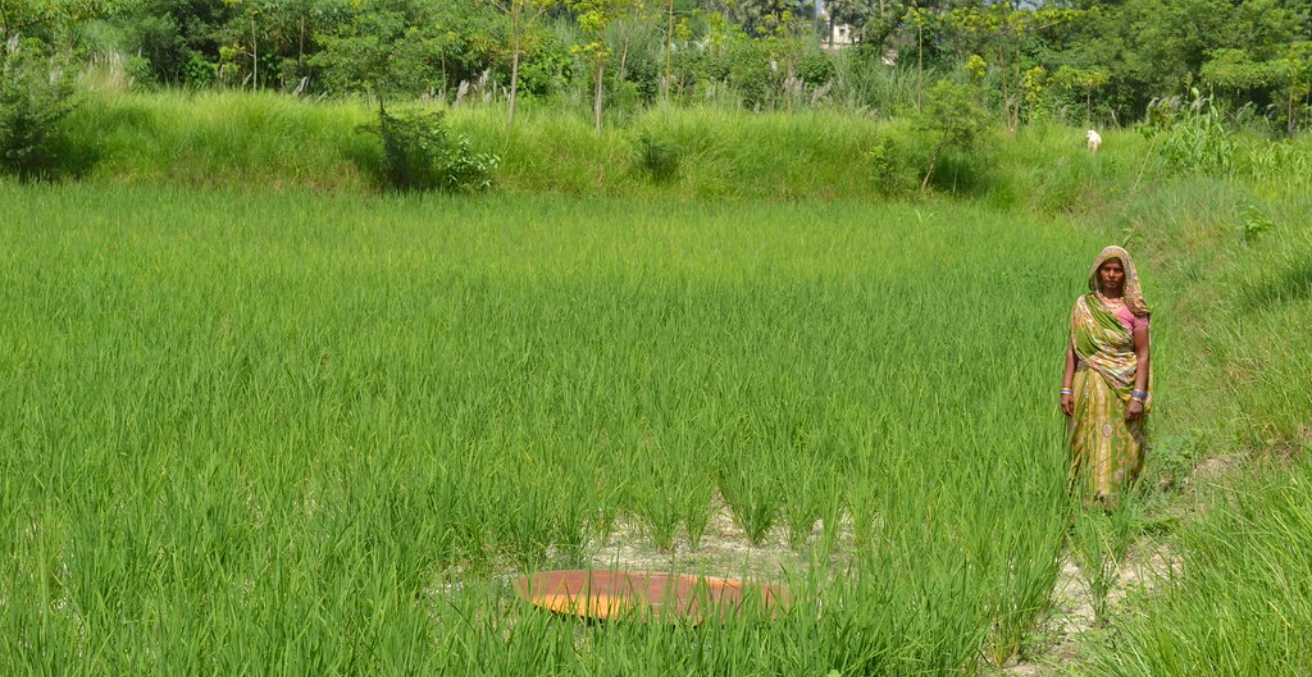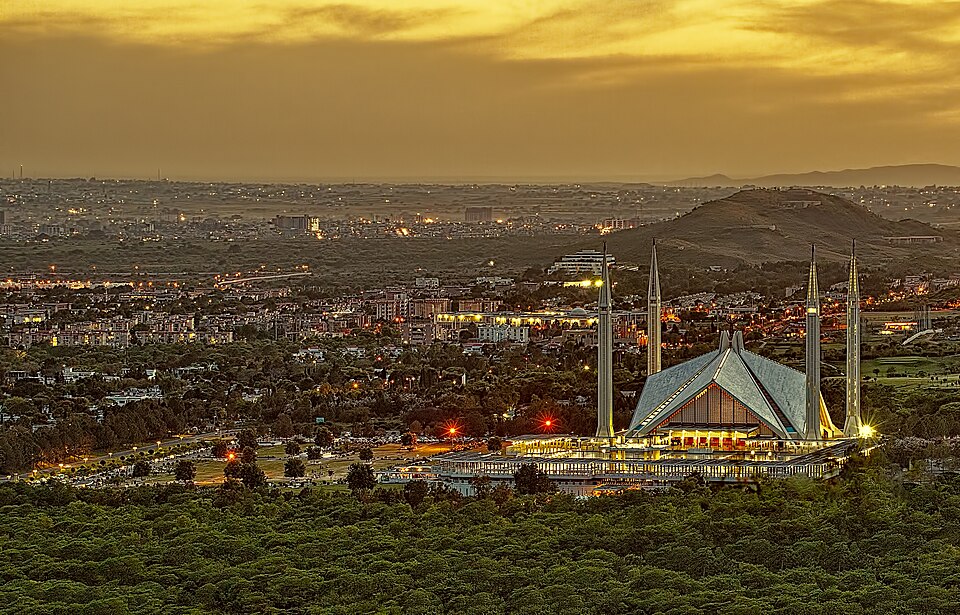While climate change affects all countries in the region, South Asia lacks a coordinated regional response. Without trust-building measures and environmental diplomatic engagement at a regional level, the region risks missing the opportunity to build resilience through collective action.
With nearly two billion people living in the South Asia region, or around 26.05 percent of the world’s total population, the consequences of environmental breakdown are not just national crises, but regional catastrophes with global implications.
Last year, India experienced its highest temperatures since 1901. According to the India Meteorological Department, the average minimum temperature rose by 0.90 degrees Celsius. In 2024, the summer heatwave (May to June) saw temperatures routinely surpass 45°C in many parts of the country. At least 37 cities were impacted, affecting life, livelihoods, and water resources across the country. Between March and May last year, India witnessed nearly 25,000 cases of suspected heat stroke, and about 56 people lost their lives due to it.
Climate change also floods a part of India annually. In 2024, the Government of India informed to the country’s parliament that 2,936 people lost their lives due to hydro-meteorological disasters in the country. 363,381 houses/huts were also damaged and 61,826 cattle were lost due to hydro-meteorological disasters in different parts of the country. It is estimated that in 2023 India lost around US$12 billion due to natural disasters.
Despite being home to over 7,000 glaciers, Pakistan is among the world’s most water-stressed countries, with per capita water availability declining to just 800 cubic metres. India’s recent decision to suspend the 64-year-old Indus Waters Treaty further complicates Pakistan’s water security, with around 80 percent of its agriculture and one-third of its hydropower reliant on the Indus River System.
Rainfall patterns are also becoming increasingly erratic. The Pakistan Meteorological Department reported 67 percent below-average rainfall last winter, and 40 percent less rainfall between September 2024 and mid-January 2025. In contrast, the country experienced catastrophic floods in 2022, which killed at least 1,700 people, affected thousands of the country’s residents and left over ten million people without access to safe drinking water. According to the Germanwatch 2025 Climate Risk Index, Pakistan ranks as the most vulnerable country to the impacts of climate change.
Over the last decade, nearly 700,000 Bangladeshis were displaced annually because of natural disasters. Further adding to concerns, the number of Bangladeshis displaced by the varied impacts of climate change could reach 13.3 million by 2050, making it the country’s number one driver of internal migration.
The economic toll of cyclone-related damages is estimated at around an enormous US$1 billion annually. From 2000 to 2019, Bangladesh incurred climate-related economic losses totaling approximately US$3.72 billion. Sea levels in Bangladesh are rising by 3.8 to 5.8 millimeters per year—faster than the global average—and could displace an estimated 900,000 people by 2050. Other projections are more grim. By mid-century, one in every seven people in Bangladesh could be displaced by climate change.
Bhutan’s 677 glacial lakes, formed by glaciers retreating at 30–60 metres per decade, pose significant risks, with 17 lakes identified as high-risk for Glacial Lake Outburst Floods by the National Center for Hydrology and Meteorology (NCHM). Erratic monsoons and glacial melt, driven by temperature increases projected to reach 4.8°C by 2100, threaten hydropower and agriculture sectors. According to the IPCC’s Fifth Assessment Report, temperatures in Bhutan could increase by up to 4.8°C by 2100, compounding existing risks and placing even greater strain on the country’s ecosystems and climate-dependent economy.
Sri Lanka, too, is experiencing the escalating impacts of climate change. Prolonged droughts in particular pose serious threats to both food and energy security. The 2016–2017 drought, one of the most severe in decades, affected 19 of the country’s 25 districts. The northern and eastern provinces reported critically low water levels for agriculture, drinking, and household use. The failure of two consecutive harvests in 2017 significantly disrupted food production and raised alarm over the food security and livelihoods of affected communities. This is particularly concerning for smallholder farmers, who account for 90 percent of Sri Lanka’s farmers and are among the most vulnerable to prolonged dry spells.
The Maldives is also at serious risk. According to NASA and the United States Geological Survey, nearly 80 percent of its low-lying islands could become uninhabitable by 2050 due to rising sea waters. The country already faces frequent flooding and coastal erosion. Despite contributing only 0.003 percent to global greenhouse gas emissions, the Maldives faces an existential threat.
Nepal’s fragile mountain ecosystems are increasingly threatened by glacial lake outburst floods, which heighten the risks of landslides, rock slides, and avalanches. Climate change is also altering rainfall patterns, contributing to droughts in parts of the country. In 2024, data showed that 12 of the past 18 winters received below-average rainfall, with droughts recorded in eight of those. Nepal is also highly flood prone. In 2024 alone, over 200 people died, 28 went missing, 143 were injured, and thousands were displaced due to flooding.
Afghanistan is also highly vulnerable to climate change, with rising temperatures, prolonged droughts, and changing precipitation patterns intensifying droughts and water scarcity. According to a report by the NGO Mercy Corps, Afghanistan’s capital, Kabul, is at a risk to becoming the first modern city to run out of water, posing an existential threat to its residents. At the same time, floods remain a growing threat, particularly in the northern and eastern provinces. The country’s lack of infrastructure to manage annual floods is estimated to result in economic losses of around US$400 million, impacting approximately 335,000 people. In March and May 2024, flash floods displaced thousands and damaged critical infrastructure. At present, Afghanistan is ranked sixth in global climate vulnerability and fourth in disaster risk, with the International Rescue Committee identifying it as the third most affected country by climate change in 2023.
Addressing climate change impacts
How to address the climate emergency and its wide-ranging impacts remains a pressing challenge. While South Asian countries have introduced various climate policies, proper implementation continues to lag due to institutional, economic, and societal constraints. Inadequate infrastructure and limited public awareness further hamper national responses. A significant portion of the population remains unaware of the severity of climate risks. According to estimates, the eight South Asian countries will collectively require around US$200 billion annually by 2030 to implement their Nationally Determined Contributions and National Adaptation Plans. This figure does not account for the mounting costs of loss and damage from recurring floods, landslides, and droughts faced annually.
Despite its far-reaching consequences, climate change is not treated as a major political issue in the region. The effects of climate change are unequally distributed across South Asia’s deeply stratified societies. For example, a study by Shah et al highlights caste-based disparities in exposure to heatwaves in India, illustrating how social hierarchies shape vulnerability. Between 2001 and 2019, around 20,000 people in India died due to heatwaves. Of the total number, individuals belonging to marginalised communities were more in number than people from other communities.
Finally, while climate change affects all countries in the region, South Asia lacks a coordinated regional response. Without trust-building measures and sustained and meaningful multilevel environmental diplomatic engagement at a regional level, the region risks missing the opportunity to build resilience through collective action.
Genevieve Donnellon-May is a Researcher at Oxford Global Society, a non-resident Vasey Fellow at the Pacific Forum and a Fellow at the Indo-Pacific Studies Center. She sits on the advisory board member of Modern Diplomacy and is a Pacific Forum Young Leader.
Dr Amit Ranjan is a Research Fellow at the Institute of South Asian Studies, National University of Singapore.
This article is published under a Creative Commons License and may be republished with attribution.





